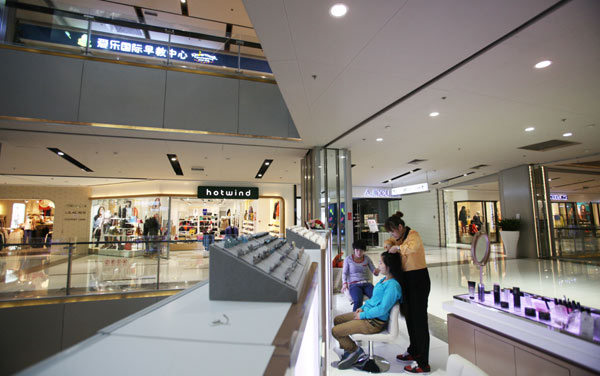

|
 The We-Life Future Plaza is a newly opened shopping mall and entertainment complex in northeastern Beijing. China is expected to have more than 10,000 shopping malls by 2025 as construction of such facilities booms across the country. [Photo / China Daily]
|
Ng Beng Tiong, the chief executive of ARA Private Funds, said district shopping centers with a gross floor area of 1 million square feet (92,900 square meters) or bigger and a high number of visitors will offer the biggest upside with limited risks for private funds in the coming years on the mainland.
Ng, a former investment banker, is targeting an internal rate of return of 20 percent from the building and operating of shopping centers on the mainland. The projects will be funded by a newly raised $441 million formed by Asia Dragon Fund II.
In contrast with residential developments that are easily affected by government policy, shopping centers will experience a robust growth in China because domestic buying power is still being viewed as a main driver of the country's economic growth, said Zhou.
A report jointly compiled by Knight Frank and Holdways shows that in 2012 the total value of retail sales and per capita consumption expenditure of urban households rose 14.3 percent and 10 percent on an annual basis, respectively.
Analysts said retail projects will outshine other commercial properties in the long term. In Shanghai, the average gross yield of prime retail projects is above 6 percent, while prime offices are between 5 and 6 percent. Residential property has remained between 3 and 4 percent, said Regina Yang, head of research and consultancy with Knight Frank, Shanghai.
Although shopping malls may bring higher returns on investment for developers than residential or office projects, the fierce competition in the market means development experience and the expertise to manage these projects will be highly demanding, said analysts.
Also, the mall-construction race may lead to a short-term glut and high vacancy if their locations are not well chosen or the tenants are not attractive enough to pull in customers.
The total shopping mall space in China's seven major cities will more than double in five years to 87 million square meters, while the supply in Beijing and Shanghai each will exceed 14 million sq m, according to research by Shenzhen World Union Properties Consultancy Co Ltd, a listed real estate consulting services company.
A loose planning regime with good availability of sites available for shopping centers, are key reasons for the high volumes of ongoing development, according to James Hawkey, managing director of retail services at Cushman & Wakefield Asia-Pacific.
Hawkey suggested potential oversupply exists in eight out of 10 major cities on the Chinese mainland, a result of rapid development.
Per capita shopping center space in the United States is more than 2 square meters. In major European Union countries where high streets play a bigger role in retail, per capita space is often between 0.5 sq m and 0.7 sq m. In major cities in China, per capita shopping center space is fast approaching EU levels, according to Hawkey.
"But it is happening too fast," said Hawkey, adding that a large proportion of the new supply is being built by inexperienced developers. As a result there may be significant problems in terms of location, design and management.
 Shanghai inaugurates Free Trade Zone
Shanghai inaugurates Free Trade Zone
 New BMW 5 Li hits Chinese market
New BMW 5 Li hits Chinese market
 China to officially launch Shanghai FTZ on Sept 29
China to officially launch Shanghai FTZ on Sept 29
 Time to get smart
Time to get smart
 Leaders' car picks around the world
Leaders' car picks around the world
 Shining models at 15th Aviation Expo China
Shining models at 15th Aviation Expo China
 2013 Beijing Intl Jewelry Expo kicks off
2013 Beijing Intl Jewelry Expo kicks off
 Microsoft revamps Surface to challenge Apple
Microsoft revamps Surface to challenge Apple